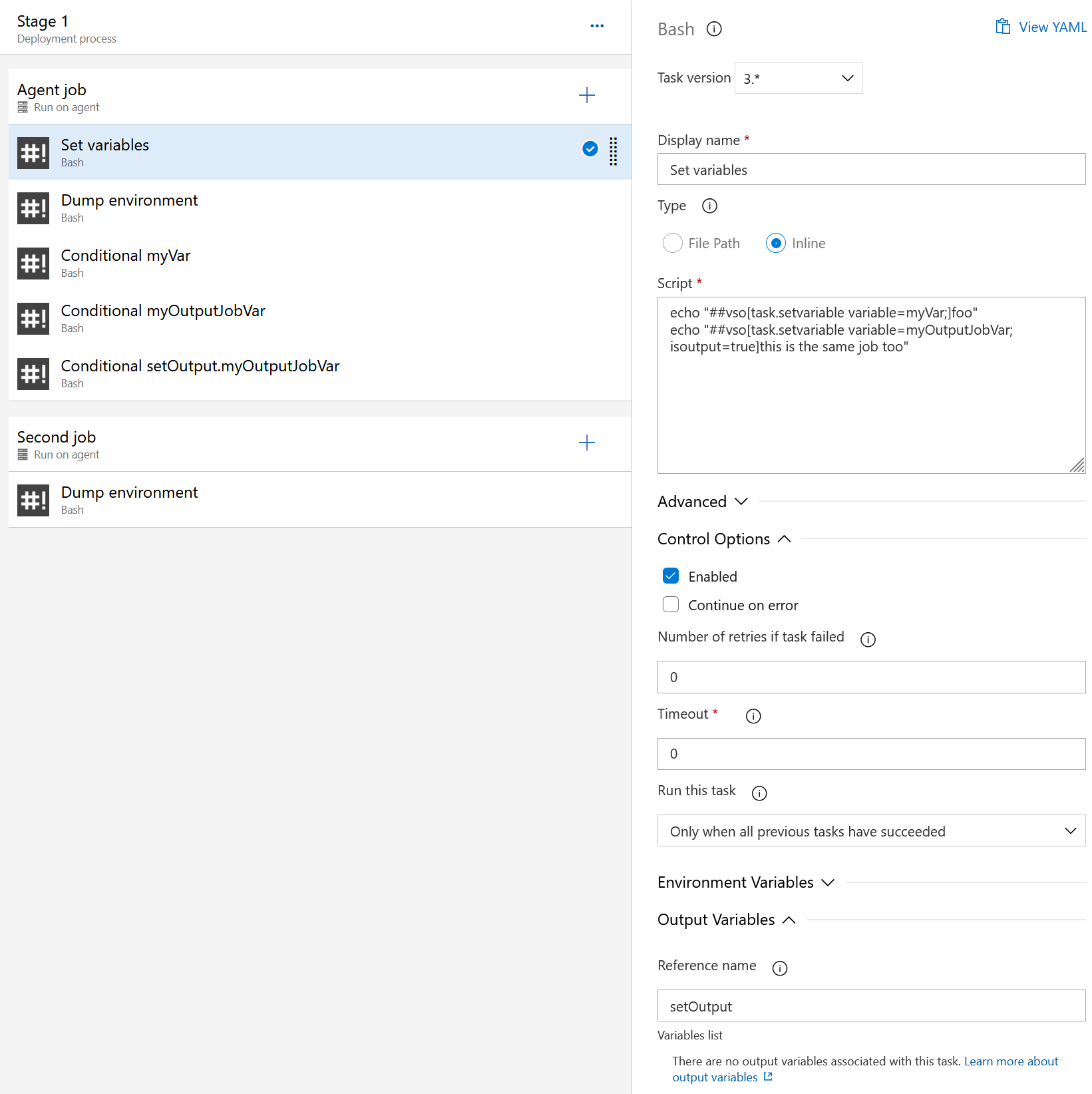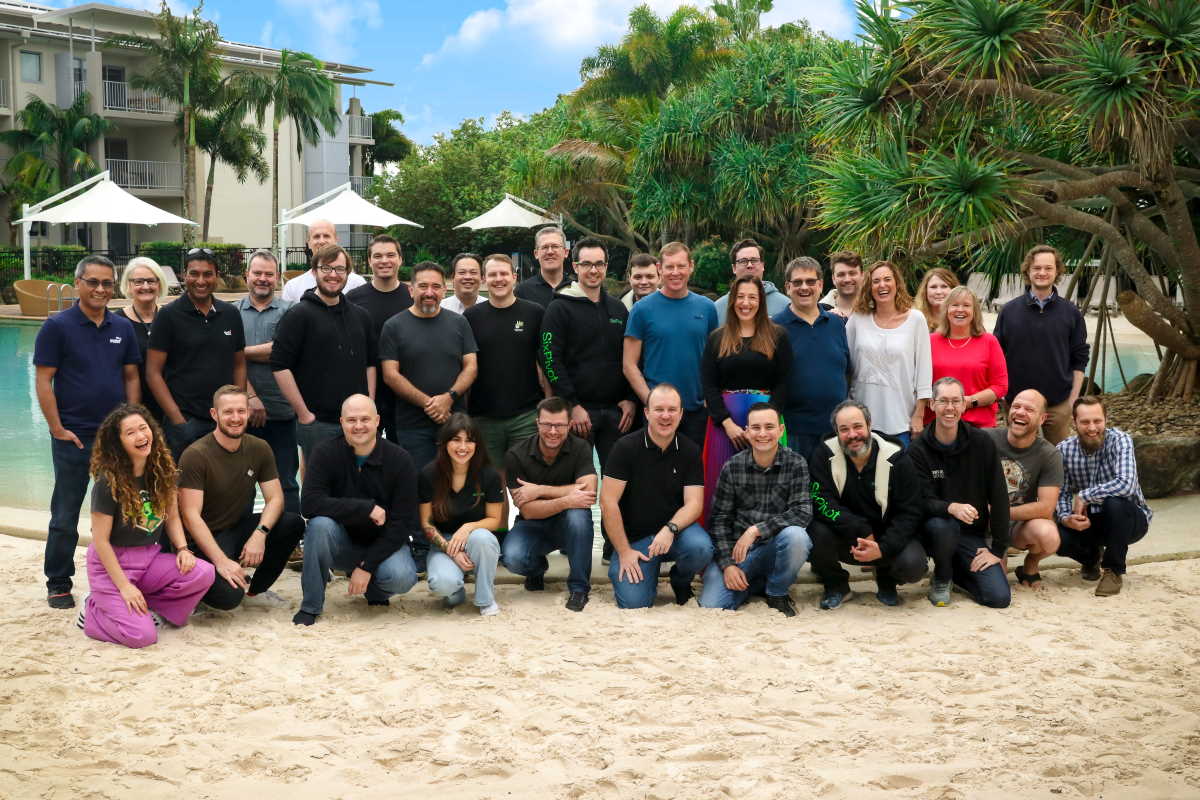-
Trigger an Azure Pipeline build from a 'Classic' release pipeline
Azure Pipelines YAML pipelines can have pipeline resource triggers (for triggering a pipeline when another YAML pipeline completes), and ‘Classic’ build pipelines have build completion triggers to do the same. ‘Classic’ Release pipelines have release triggers, which trigger every time a new build artifact is available.
But what if you’ve got a mix of ‘classic’ release and YAML pipelines? Can you trigger a YAML pipeline from a ‘classic’ release pipeline? There’s nothing built in to do this, but we can make it happen via the Azure DevOps APIs.
- In the Azure DevOps UI, under Pipelines, navigate to the YAML pipeline that you want to trigger.
- Make note of the
definitionIdin the URL. You’ll need this for thePIPELINE_IDvalue later. - Click on the ‘…’ button in the top right and select Manage Security
-
Select the <Project Name> Build Service (<Org Name>) user, and ensure Queue builds option is set to Allow.
Note: You can also set this for all pipelines, rather than for an individual pipeline.

-
In the release pipeline, select the Agent Job, and ensure the Allow scripts to access the OAuth token option is checked (this will allow access to
System.AccessToken)
- Add a script task (I’m using the Bash Task, but you could equally use PowerShell though you’d need to adjust the script slightly)
-
Add the following inline script:
PIPELINE_ID="15" url="$(SYSTEM.TEAMFOUNDATIONCOLLECTIONURI)$(SYSTEM.TEAMPROJECTID)/_apis/pipelines/$PIPELINE_ID/runs?api-version=6.0-preview.1" echo $url curl -s --request POST \ -u ":$(System.AccessToken)" \ --header "Content-Type: application/json" \ --data '{ "resources": { "repositories": { "self": { "refName": "refs/heads/main" } } } }' \ $url -
If you now create a new release, once that completes you should see the YAML pipeline build queued to run. Notice that the summary indicates the build was triggered manually by the service account.

Things to note:
- Update the value assigned to
PIPELINE_IDwith the value you noted from thedefinitionIdearlier. - If the repo uses a default branch other than
mainthen you’ll need to modify that too. - The script assumes you’re triggering in the same project. If you need to trigger a pipeline in a different project you’ll need to replace
$(SYSTEM.TEAMPROJECTID)with the project name, or more preferably the project id (GUID) for that project. - Failing to set permission to allow queuing builds won’t result in an error, but it will just mean builds aren’t queued. If builds aren’t being queued, double-check that you have enabled this on the correct pipeline, or it is enabled for all pipelines.
Credits: The curl invocation was inspired by the example at https://cloudaffaire.com/how-to-create-and-execute-azure-pipelines-using-rest-api/.
-
Using script variables in Azure Release Pipelines
Azure Pipeline still has ‘classic’ Release Pipelines. It has some limitations compared to the newer YAML-based deployment jobs, but sometimes the visualisation it provides for both pipeline design and deployment progress is still preferred.
I recently wanted to make a task in a release pipeline conditional on the value of a variable set in an earlier script task, but I wasn’t quite sure how to reference the variable in the conditional expression.
To figure it out, I did a little experiment. I started with a script task that contained this content:
echo "##vso[task.setvariable variable=myJobVar]this is the same job" echo "##vso[task.setvariable variable=myOutputJobVar;isoutput=true]this is the same job too"The script sets two variables, the second being an ‘output’ variable.
In the Output Variables section, the script task also sets the Reference name to
setOutput.
I then created some additional script tasks, and under the Control Options section, change Run this task to
Custom conditions, and then entered one of these expressions in each:and(succeeded(), ne(variables.myVar, '')) and(succeeded(), ne(variables['myOutputJobVar'], '')) and(succeeded(), ne(variables['setOutput.myOutputJobVar'], ''))Note that as we’re working with conditions and expressions, we use the runtime expression syntax to reference variables.

So from this, I can conclude:
- For a regular variable, use
variables.myVar, where the name of the variable wasmyVar - For an output variable, use
variables['setOutput.myOutputJobVar'], where the name of the variable wasmyOutputJobVarand the task had a reference name ofsetOutput.
What about referencing a variable from a subsequent job?
Unfortunately, this is not possible with classic release pipelines.
The closest you can get to this is a hack involving using the Azure DevOps API to update a predefined release definition variable.
Output variables are primarily intended to allow consumption in downstream jobs and stages. Given this is not possible with release pipelines, there’s no real advantage to creating output variables in your scripts. To keep things simple just define them as regular variables.
- For a regular variable, use
-
SixPivot Summit 2022
I started working at SixPivot back in February 2021. Given the state of the pandemic, all my interactions were done online. But I was hoping it wouldn’t be too long before I got to meet all the other ‘Pivots’ (as SixPivot folks call ourselves). 18 months later, the wait was a little longer than I’d thought it would be.
So with all that pent-up anticipation, did the in-person SixPivot Summit meet expectations?
YES!

The summit was held at Peppers Salt Resort and Spa Kingscliff, which is just south of the Queensland/NSW border. A very nice place to visit.
I flew out of Adelaide on a cold and wintery morning and arrived a couple of hours later at Gold Coast Airport, where it was also overcast and raining! Not quite as cold though.
Friday afternoon was settling in, and then a pleasant walk down to the local lawn bowls club for a few ends of social bowling with most of the other pivots and their families, followed by dinner nearby at the local surf club.
Saturday was the summit proper. A full day of sessions from the SixPivot leadership team, but very much in an interactive and open format. The openness is something I definitely appreciate.
I remember thinking during the afternoon, “I really feel like I’ve found my work ‘home’”. A sense of shared values and purpose, but still with a range of opinions, experiences and perspectives. That had certainly been my sense over the last 18 months, but it was great to have it confirmed in person.
Saturday night staff and their families were all invited to a dinner held at the resort. Great food and more time to spend getting to know everyone.
Sunday was our own time, with my flight back home in the early afternoon. Clear skies had returned, so I enjoyed a quick walk along the beach before breakfast. Afterwards, (and being a Sunday), I watched my local church service from the comfort of my hotel room. Handy that they live stream on YouTube!

There were still plenty of Pivots around so I took the opportunity for more chatting and saying farewell to those leaving on earlier flights. Then a friendly taxi ride back to the airport and an uneventful flight back home to Adelaide.
It was a great weekend. I definitely feel more connected with, and have a better understanding of my colleagues. I’m looking forward to our next opportunity to come together.